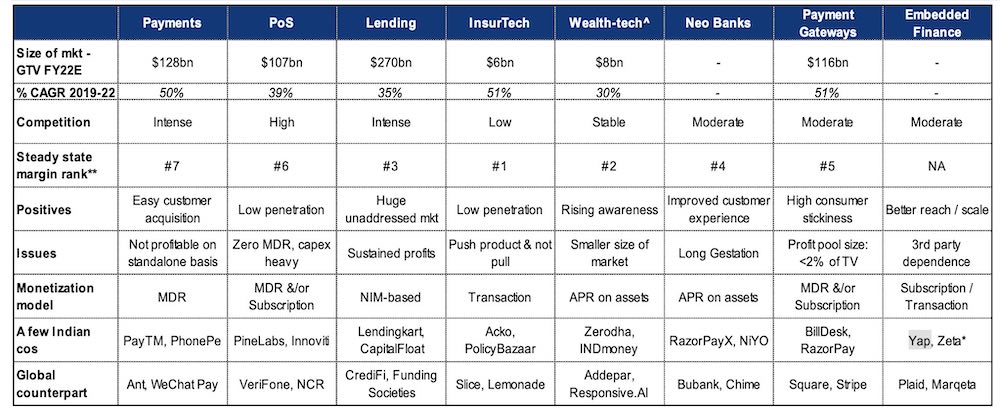- July 1, 2021
- by:
- in: Blog
Kevin Novak joined Uber as its 21st employee its seventh engineer in 2011, and by 2014, he was the company’s head of data science. He talks proudly of that time, but like all good things, it ran its course and by the end of 2017, having accomplished what he wanted at the company, he left.
Kevin Novak joined Uber as its 21st employee its seventh engineer in 2011, and by 2014, he was the company’s head of data science. He talks proudly of that time, but like all good things, it ran its course and by the end of 2017, having accomplished what he wanted at the company, he left.
At first, he picked up the pace of his angel investing, work he’d already begun focusing on during weekends and evenings, ultimately building a portfolio of more than 50 startups (including the fintech Pipe and the autonomous checkout company Standard Cognition).
He also began advising both startups and venture firms — including Playground Global, Costanoa Ventures, Renegade Partners and Data Collective — and after falling in love with the work, Novak this year decided to launch his own venture outfit in Menlo Park, Ca., called Rackhouse Venture Capital. Indeed, Rackhouse just closed its debut fund with $15 million, anchored by Uber’s first head of engineering, Curtis Chambers; Steve Gilula, a former chairman of Searchlight Pictures, and the fund of funds Cendana Capital. A lot of the VCs Novak knows are also investors in the fund.
We caught up with Novak late last week to chat out that new vehicle. We also talked about this tenure at Uber, where, be warned, he played a major role in creating surge pricing (though he prefers the term “dynamic pricing.”) You can hear that fuller discussion or check out excerpts from it, edited lightly for length and clarity, below.
TC: You were planning to become a nuclear physicist. How did you wind up at Uber?
KN: As an undergrad, I was studying physics, math and computer science, and when I got to grad school, I really wanted to teach. But I also really liked programming and applying physics concepts in the programming space, and the nuke department had the largest allocation of supercomputer time, so that ended up driving a lot of my research — just the opportunity to play on computers while doing physics. So [I] was studying to become a nuclear physicist was funded very indirectly through the research that eventually became the Higgs boson. As the Higgs got discovered, it was very good for humanity and absolutely horrible for my research budget . . .
A friend of mine heard what I was doing and sort of knew my skill set and said, like, ‘Hey, you should come check out this Uber cab company that it’s like a limo company with an app. There’s a very interesting data problem and a very interesting math problem.’ So I ended up applying [though I committed] the cardinal sin of startup applications and wore a suit and tie to my interview.
TC: You’re from Michigan. I also grew up in the Midwest so appreciate why you might think that people would wear a suit to an interview.
KN: I got off the elevator and the friend who’d encouraged me to apply was like, ‘What are you wearing?!’ But I got asked to join nonetheless as a computational algorithms engineer — a title that predated the data science trend — and I spent the next couple of years living in the engineering and product world, building data features and . . .things like our ETA engine, basically predicting how long it would take an Uber to get to you. One of my very first projects was working on tolls and tunnels because figuring out which tunnel an Uber went through and how to build time and distance was a common failure point. So I spent, like, three days driving the Big Dig in Boston out to Somerville and back to Logan with a bunch of phones, collecting GPS data.
I got to know a lot of very random facts about Uber cities, but my big claim to fame was dynamic pricing. . . and it turned out to be a really successful cornerstone for the strategy of making sure Ubers were available.
TC: How does that go over, when you tell people that you invented surge pricing?
KN: It’s a very quick litmus test to figure out like people’s underlying enthusiasm for behavioral econ and finance. The Wall Street crowd is like, ‘Oh my god, that’s so cool.’ And then a lot of people are like, ‘Oh, thank you, yeah, thank you so much, wonderful, you buy the next round of drinks’ type of thing. . . [Laughs.]
But data also became the incubation space for a lot of the early special projects like Uber pool and a lot of the ideas around, okay, how would you build a dispatching model that enables different people with pooled ride requests? How do you batch them together efficiently in space and time so that we can get the right match rate that [so this] project is profitable? We did a lot of work on the theory behind the hub-and-spoke Uber Eats delivery models and thinking through how we apply our learnings about ride-share to food. So I got the first person perspective on a lot of these products when it was literally three people scribbling on a notepad or riffing on a laptop over lunch, [and which] eventually went on to become these big, nationwide businesses.
TC: You were working on Uber Freight for the last nine months of your career with Uber, so there when this business with Anthony Levandowski was blowing up.
KN: Yeah, it was it was very interesting era for me because more than six years in, [I was already developing the] attitude of ‘I’ve done everything I wanted to do.’ I joined a 20-person company and, at the time, we were closing in on 20,000 people . . .and I kind of missed the small team dynamic and felt like I was hitting a natural stopping point. And then Uber’s 2017 happened and and there was Anthony, there was Susan Fowler, and Travis has this horrific accident in his personal life and his head was clearly not in the game. But I didn’t want to be the guy who was known for bailing in the worst quarter of the company’s history, so I ended up spending the next year basically keeping the band together and trying to figure out what I could do to keep whatever small part of the company I was running intact and motivated and empathetic and good in every sense of the word.
TC: You left at the end of that year and it seems you’ve been very busy since, including, now, launching this new fund with the backing of outsiders. Why call it Rackhouse? You used the brand Jigsaw Venture Capital when you were investing your own money.
KN: Yeah. A year [into angel investing], I had formed an LLC, I was “marking” my portfolio to market, sending quarterly updates to myself and my accountant and my wife. It was one of these exercises that was a carryover from how I was training managers, in that I think you grow most efficiently and successfully if you can develop a few skills at a time. So I was trying to figure out what it would take to run my own back office, even if it was just moving my money from my checking account to my “investing account,” and writing my own portfolio update.
I was really excited about the possibility of launching my first externally facing fund with other people’s money under the Jigsaw banner, too, but there’s actually a fund in the UK [named Jigsaw] and as I started to talk to LPs and was saying ‘Look, I want to do this data fund and I want it to be early stage,’ I’d get calls from them being like, ‘We just saw that Jigsaw did this Series D in Crowdstrike.’ I realized I’d be competing with the other Jigsaw from a mindshare perspective, so figured before things go too big and crazy, I’d create my own distinct brand.
TC: Did you roll any of your angel-backed deals into the new fund? I see Rackhouse has 13 portfolio companies.
KN: There are a few that I’ve agreed to move forward and warehouse for the fund, and we’re just going through the technicalities of doing that right now.
TC: And the focus is on machine learning and AI.
KN: That’s right, and I think there are amazing opportunities outside of the traditional areas of industry focus that, to the extent that you can find like rigorous applications of AI, are also going to be significantly less competitive. [Deals] that don’t fall in the strike zone of nearly as many [venture] firms is the game I want to be playing. I feel like that that opportunity — regardless of sector, regardless of geography — biases toward domain experts.
TC: I wonder if that also explains the size of your fund — your wanting to stay out of the strike zone of most venture firms.
KN: I want to make sure that I build a fund that enables me to be an active participant in the earliest stages of companies.
Matt Ocko and Zack Bogue [of Data Collective] are good friends of mine — they’re mentors, in fact, and small LPs in the fund and talked with me about how they got started. But now they have a billion-plus [dollars] in assets under management, and he people I [like to back] are two people who are moonlighting and getting ready to take the plunge and [firms the size of Data Collective] have basically priced themselves out of the formation and pre-seed stage, and I like that stage. It’s something where I have a lot of useful experience. I also think it’s the stage where, if you come from a place of domain expertise, you don’t need five quarters of financials to get conviction.






